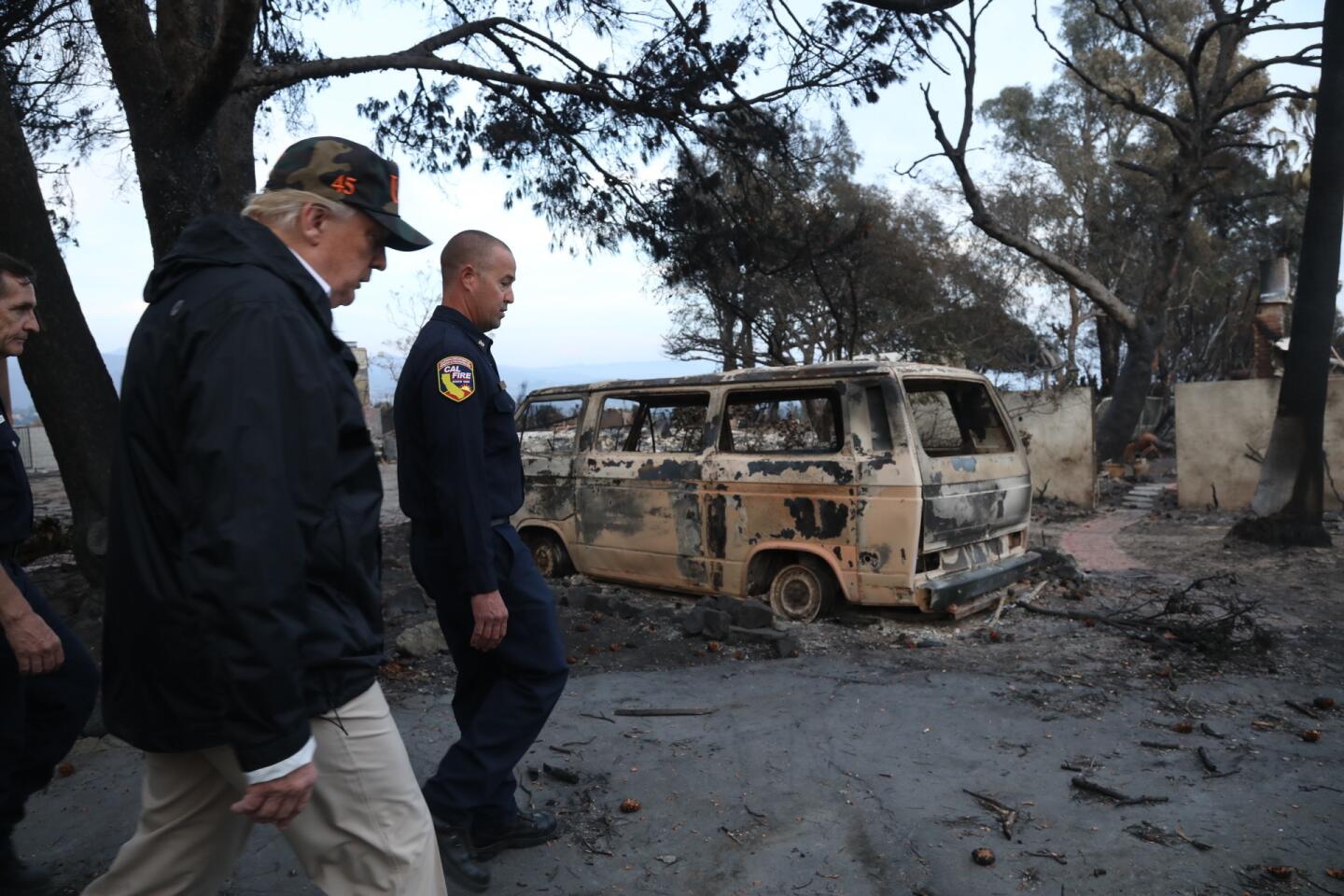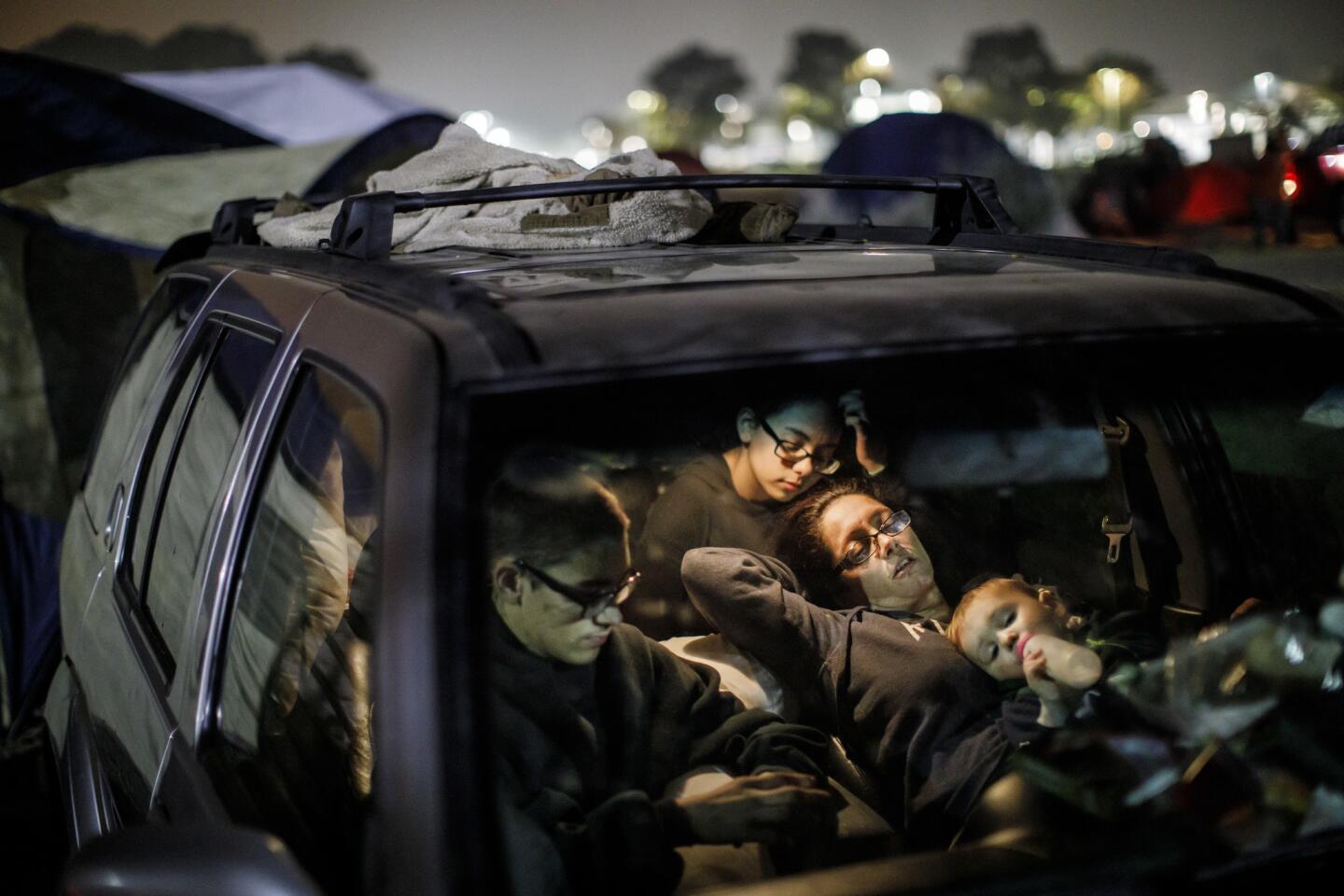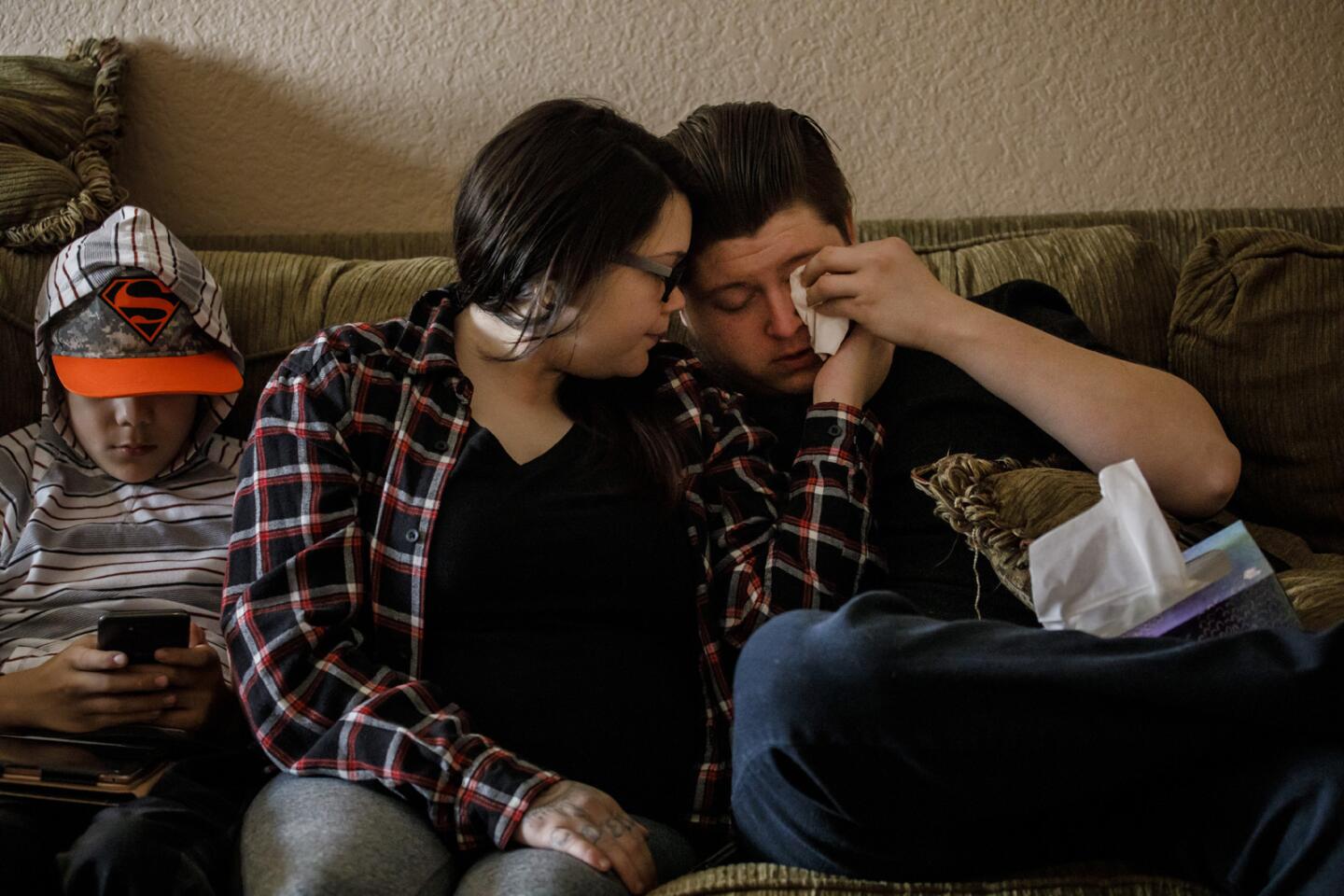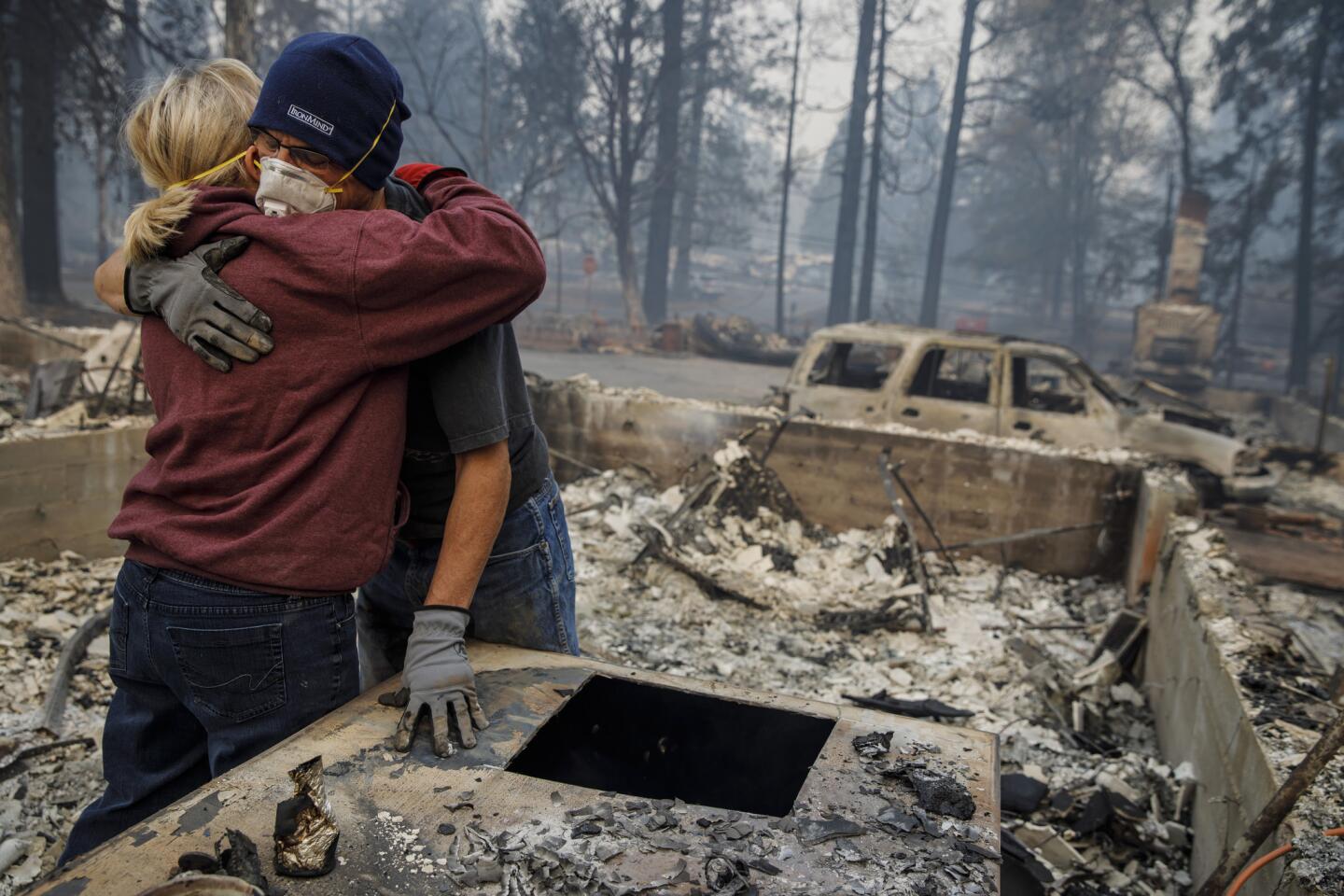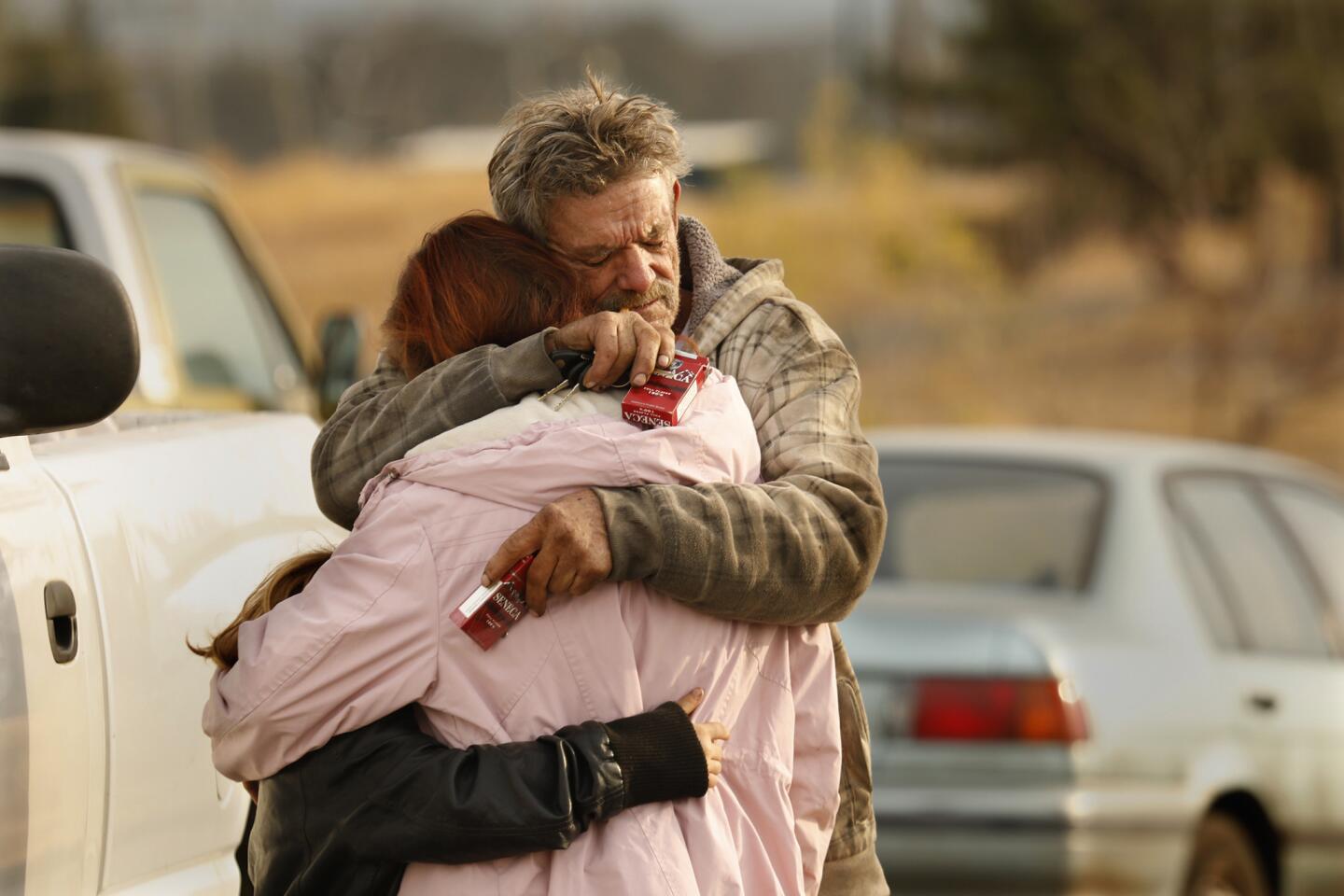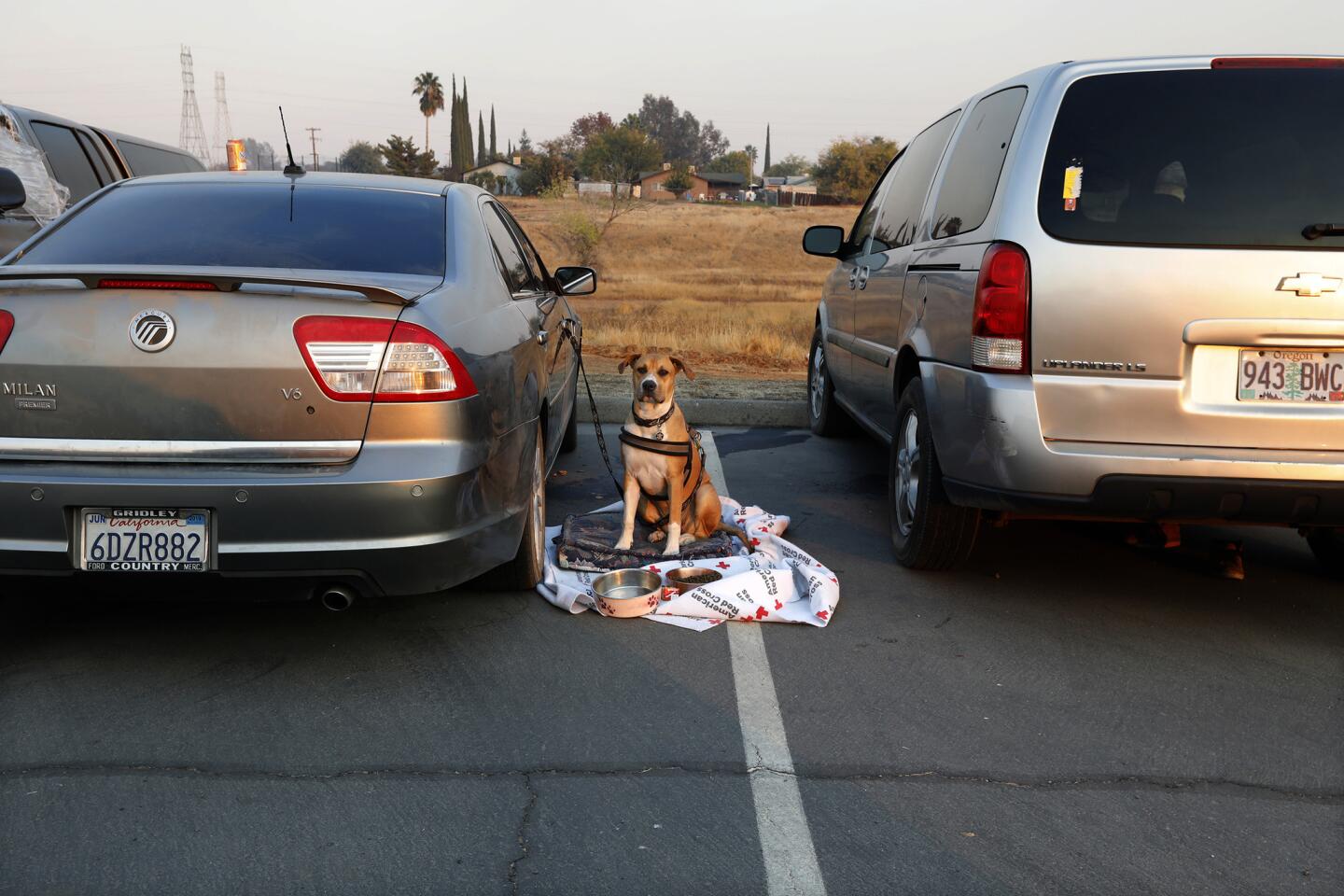California fire: PG&E canceled planned power shut-off in Paradise area just before Camp fire broke out
Reporting from Sacramento — When strong autumn winds roared into Northern California, Pacific Gas & Electric Co. decided it was going to take an extreme action to prevent a repeat of last year’s firestorms that destroyed thousands of homes in Santa Rosa.
On Oct. 14, the company cautiously shut off power to some 60,000 Sierra foothills and North Bay customers, hoping to prevent any downed power lines from sparking a fire. On Nov. 6, PG&E again began warning 70,000 customers — including those in the town of Paradise — that it might flip the switch in the face of fire danger.
But for reasons that remain unclear, the utility decided not to shut off power that day.
Fierce winds picked up in the Sierra foothills that morning, fueling the most destructive fire in California history, which has burned nearly 10,000 homes, killed at least 71 people and left more than 1,000 unaccounted for.
The cause of the Camp fire is still under investigation, but there is suspicion that, like several of the wine country blazes last year, it was sparked by power lines. PG&E said a transmission line in the area went offline 15 minutes before the fire was first reported, and the company found a damaged transmission tower near where investigators have said the fire began.
PG&E has said weather conditions “did not warrant” a shut-off but has declined to explain further. Utility officials have said a preemptive blackout would probably not have prevented the Camp fire, even if power lines turn out to be the cause. The company doesn’t shut off transmission lines that operate at or above 115 kilovolts, the size of the line under scrutiny in the Paradise blaze.
These are the victims of the California wildfires
Transmission lines can be critical to providing power to millions of customers, the company said, whereas more localized distribution lines — the kind that are shut down when conditions are determined to be dangerous — funnel power to homes and businesses.
The electrical system is also under investigation as a possible cause of the Woolsey fire in Southern California, which destroyed 800 structures and killed three. Southern California Edison reported an issue with a circuit in the utility’s Chatsworth substation minutes before the fire broke out in the same area.
Power companies are expanding the use of planned blackouts to prevent their lines from sparking infernos in a state still struggling with a new paradigm of wildfire danger. Yet the practice — prompted by criticism of past inaction and encouraged by California legislators this year — has led to calls for additional guidelines and oversight.
And then there are the trade-offs. Shutting down power can endanger hospital patients or people who rely on oxygen tanks and other lifesaving electrical equipment and can hinder the ability of residents to receive emergency warnings. But failing to turn off fragile electrical infrastructure during high-risk scenarios can be catastrophic.
“I think that is the crux of the public and the policy debate,” said Elizaveta Malashenko, director of the safety and enforcement division at the California Public Utilities Commission. “How do you strike the right balance and manage the risks on both sides?”
The future of the utilities hangs in the balance, too. Commission President Michael Picker raised the question on Thursday of whether PG&E needs to be broken up, promising an examination of the company’s organizational structure to determine the best way to ensure safety.
Utilities make the decision to shut off power on their own, on a case-by-case basis, depending on predictive models and weather observations. That it’s so informal may explain why there’s no precedent for state regulators to levy fines, either for failing to act or for too aggressively turning off power.
Until recently, San Diego Gas & Electric was the only California utility that de-energized power lines during high-risk fire conditions. Over the summer, state regulators strengthened the SDG&E guidelines and applied them to all investor-owned utilities as a fire prevention tool of last resort. The CPUC is holding a public meeting on de-energization next month.
As soon as the public outreach began, local officials protested.
LIVE UPDATES: The latest on the California wildfires
City leaders in Malibu, designated an “extreme risk” area, raised serious concerns about Southern California Edison’s public safety shut-off plan months before Santa Ana winds swept the deadly Woolsey fire to their doorstep.
City Manager Reva Feldman wrote in a July letter to the California Public Utilities Commission that most Malibu residents live in remote areas accessed by a single road, making evacuations difficult. Without power, internet access would be lost, and residents without landlines would be cut off from emergency alerts and evacuation instructions. Traffic signals wouldn’t work. And water would cease to flow in a system that relies on powered pump stations, hindering firefighting efforts.
Like PG&E, Edison warned 85,000 customers — but only cut power to 100 — before the Woolsey fire ignited. No determination has been made whether sparks from power lines played played a role in the fire, and investigations by the California Department of Forestry and Fire Protection can take several months.
State Sen. Jerry Hill (D-San Mateo), a fierce PG&E critic since the company’s natural gas pipeline burst in San Bruno and killed eight people in 2010, said utilities should be able to shut down any power line that poses a danger to their customers.
“If it’s beneficial and a safety concern, then all lines should be on the table,” Hill said.
PG&E has detailed a combination of factors it considers before striking power, including warnings from the National Weather Service, humidity levels generally at 20% or below, sustained winds of at least 20 to 25 mph and gusts of 40 to 45 mph or more. The local temperature, terrain and climate also play a role, along with observations from crews on the ground.
PG&E has declined to explain which factors failed to meet its criteria when it called off the plan the morning the Camp fire began.
The National Weather Service issued a red-flag warning one day prior, predicting wind gusts of up to 55 mph and low humidity levels across the region.
At 4 a.m. on Nov. 8, hours before the fire started, a weather station east of Paradise recorded sustained winds of 32 mph with gusts of 52 mph. Humidity dropped as low as 11% that day.
“It was a strong north wind event and really dry fuel conditions,” said Dan Keeton, meteorologist-in-charge of the National Weather Service in Sacramento. “It was a significant red-flag event and one of the stronger ones of the season.”
The National Weather Service in Oxnard predicted even higher wind gusts and humidity in the single digits in a red-flag warning issued for most of Los Angeles and Ventura counties at 8:45 a.m. on Nov. 8. The Woolsey fire began less than six hours later.
“An evaluation of the measurable … criteria, combined with judgment on impacts to the local community, determined we would not shut off power,” Edison spokeswoman Sally Jeun said in a statement.
If companies cut power, they must inspect all of their lines before flipping it back on. PG&E filed a report with the state after the planned outage in October, detailing 18 instances of wind-related damage to its equipment and five hazards “such as branches found lying across conductors” before it restored power.
But the lack of advance notification concerned local and state officials.
The Governor’s Office of Emergency Services, Cal Fire and the CPUC sent a letter to the utilities last month highlighting the need for more notice. Recent action by the companies to cut power make clear “utilities must provide specific, real-time information so the state can take appropriate steps to ensure public safety,” the agencies wrote.
Hill wonders whether PG&E hesitated to shut off power in Butte County because of reaction to the first planned blackout.
“Did they make that decision because they didn’t want the political fallout and public relations fallout from customers who complained in October?” the lawmaker asked.
Senate Bill 901, a wide-ranging measure signed into law in September to address fire liability and forest management, requires all utilities to provide the state with a plan for cutting power during high-risk fire conditions.
SDG&E said it first cut power, pioneering the practice, five years ago. David L. Geier, the company’s senior vice president of electric operations, said it started considering preventive shut-offs after deadly fires swept through San Diego County in 2007.
“We believe we have to try to eliminate every fire,” Geier said.
Geier said SDG&E worked with customers who provide essential services — such as water and telecommunications — for more than a year in advance of any shut-off. It’s also spent $1 billion to replace aging wooden electrical poles with steel and stronger wires, as well as technology to more accurately gauge humidity and wind speeds.
Other changes could also lessen the impact of power shut-offs. Michael Wara, a climate and energy researcher at Stanford University Law School, said power companies and the state could invest in more solar panels and batteries to power homes during planned blackouts.
Malibu Mayor Rick Mullen said the state needs an electrical overhaul that includes the construction of underground power lines. Even in hindsight, he stands by his community’s concerns about losing power and says electricity was critical to their evacuation efforts.
“It’s almost 18th-century technology, in some ways,” Mullen said of the “rickety poles” and wires that funnel power to homes in his community. “Let’s make the investment to make the system durable.”
Track key details of the California wildfires
Twitter: @tarynluna
More to Read
Get the L.A. Times Politics newsletter
Deeply reported insights into legislation, politics and policy from Sacramento, Washington and beyond. In your inbox three times per week.
You may occasionally receive promotional content from the Los Angeles Times.




